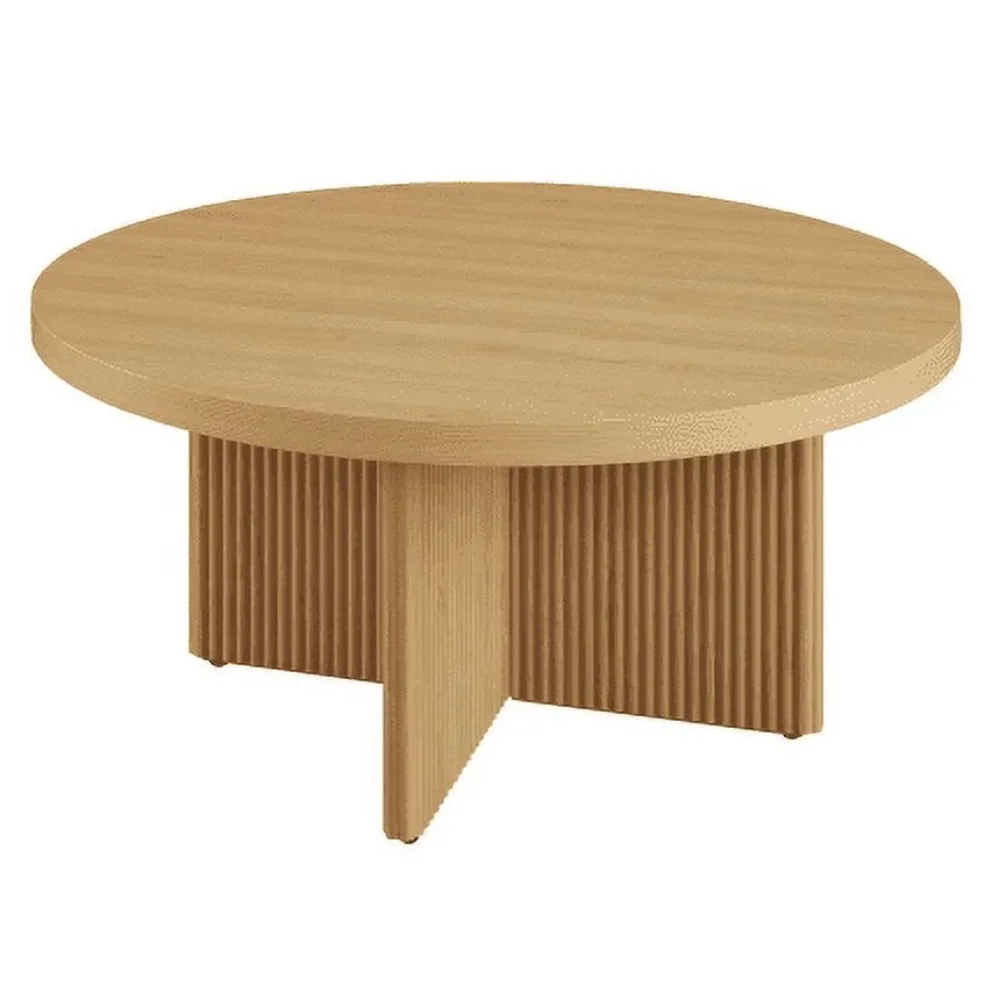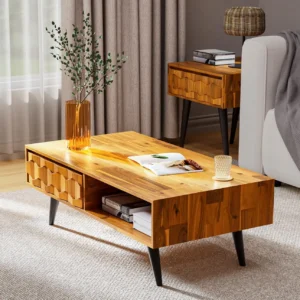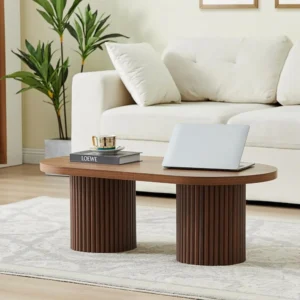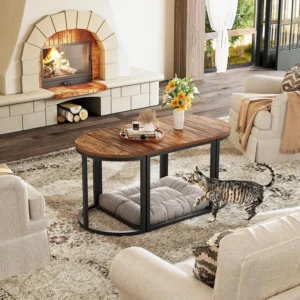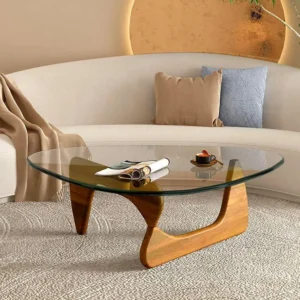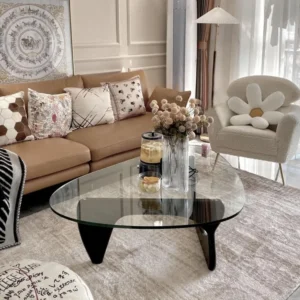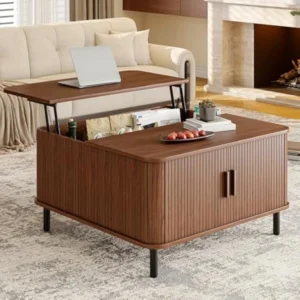Introduction: Why Solid Wood Stands the Test of Time
When we talk about furniture that lasts generations, solid wood stands as the undisputed champion. Unlike its counterparts—engineered woods like MDF and particleboard or veneered surfaces—solid wood furniture is crafted from complete pieces of lumber with intact grain patterns running throughout. This fundamental difference gives solid wood pieces their remarkable staying power.
Throughout history, solid wood furniture has graced homes from medieval castles to modern apartments. Many museums display functional wooden chairs, tables, and chests that have served families for hundreds of years—some dating back to the 17th century and still sturdy enough for daily use. This exceptional longevity isn’t accidental; it stems from inherent qualities that engineered materials simply cannot replicate.
The durability of solid wood furniture isn’t one-dimensional. It encompasses resistance to daily wear, structural integrity over decades, ability to withstand environmental changes, and potential for restoration when needed. Understanding these elements helps discerning buyers recognize quality pieces that will serve not just for years, but potentially for generations.
As we explore the factors that contribute to intelligent black mid-century coffee tables and other solid wood furniture lasting through decades, you’ll discover how to evaluate furniture quality and ensure your investment stands the test of time. The enduring legacy of mid-century modern solid wood coffee tables and other wood furniture is a testament to the material’s exceptional durability.
How Long Does Solid Wood Furniture Really Last?
When properly maintained, solid wood furniture typically lasts anywhere from 50 to 100 years—and frequently much longer. This stands in stark contrast to the average 7-15 year lifespan of mass-produced furniture made from engineered materials. What’s more remarkable is that solid wood pieces often remain functional far beyond these estimates, becoming true heirlooms that pass through multiple generations.
The distinction between average solid wood furniture and true heirloom pieces typically comes down to three factors:
- Superior craftsmanship with traditional joinery methods
- Use of high-quality, properly dried hardwoods
- Consistent care and maintenance through generations
Historical examples provide compelling evidence of wood’s extraordinary longevity. Shaker furniture from the early 1800s remains functional and highly sought after today. Mission oak pieces from the early 20th century continue serving in homes worldwide. Even older examples exist in museums—17th-century oak chests and tables that have survived political revolutions, multiple relocations, and centuries of use.
The most impressive aspect of solid wood furniture is its renewable nature. Unlike disposable furniture that deteriorates beyond repair, solid wood can be refinished multiple times. Surface scratches can be sanded away, broken parts can be replaced, and joints can be reglued. With proper care and occasional restoration, there’s virtually no limit to how long a quality piece can remain functional.
The ultimate guide solid wood coffee tables offers deeper insights into the specific characteristics that give these pieces their exceptional durability, making them investments that appreciate rather than depreciate over time.
Key Factors Influencing Solid Wood Furniture Durability
A. Wood Species: The Foundation of Strength
The wood species chosen for furniture construction establishes the baseline for its potential durability. This fundamental choice affects resistance to dents, scratches, moisture, and structural integrity over decades.
Hardwoods generally offer superior durability compared to softwoods due to their denser cell structure. Common hardwoods used in quality furniture include:
| Wood Type | Janka Hardness Rating* | Characteristics | Best Applications |
|---|---|---|---|
| Red Oak | 1,290 | Resistant to wear, prominent grain | Dining tables, chairs, bed frames |
| Hard Maple | 1,450 | Extremely hard, tight grain, resists abrasion | Kitchen furniture, heavy-use surfaces |
| Cherry | 950 | Medium hardness, ages beautifully | Cabinets, desks, accent pieces |
| Walnut | 1,010 | Moderate hardness, rich color, stable | Fine furniture, cabinets, desks |
| White Oak | 1,360 | Very hard, water resistant, tight grain | Tables, chairs, outdoor furniture |
| Mahogany | 800-900 | Moderate hardness, excellent stability | Fine furniture, cabinets |
*Janka Hardness Rating measures resistance to denting and wear (higher numbers indicate greater hardness)
Softwoods like pine (420), cedar (350), and fir (660) have significantly lower hardness ratings. While less expensive, these woods dent and scratch more easily, making them better suited for casual furniture, decorative pieces, or areas with limited wear.
For high-traffic furniture that needs to withstand decades of use, harder species like oak, maple, and hickory excel. For heirloom decorative pieces where gentle handling is expected, softer hardwoods like cherry and walnut offer beautiful aging characteristics while still providing good durability.
The exceptional durability of teak explains why mid-century modern teak coffee tables remain sought-after collector’s items decades after their initial construction. This tropical hardwood contains natural oils that resist moisture, insects, and decay, making it one of the most durable furniture woods available.
B. The Art of Construction: Craftsmanship and Joinery
While wood species establishes baseline durability, construction methods determine whether a piece will remain structurally sound over decades. Quality craftsmanship transforms raw lumber into furniture that withstands daily use, seasonal wood movement, and the test of time.
Superior joinery methods create connections between wood pieces that maintain strength despite wood’s natural expansion and contraction. The strongest traditional joinery techniques include:
- Dovetail joints: Interlocking trapezoidal pins and tails create connections that resist pulling apart, ideal for drawer construction
- Mortise and tenon: A projecting tenon fits into a precisely cut mortise hole, creating exceptionally strong frame connections for chairs and tables
- Box joints: Interlocking square fingers connect corners with extensive gluing surface for strong casework
- Floating tenons: Independent tenons connect two mortises, allowing for wood movement while maintaining strength
Beyond joinery, other construction elements significantly impact durability:
- Proper wood preparation: Furniture-grade wood must be kiln-dried to 6-8% moisture content to prevent future warping
- Grain orientation: Aligning grain direction properly minimizes movement and maximizes strength
- Panel construction: Solid wood panels must accommodate seasonal expansion/contraction through proper floating design within frames
- Corner blocking: Additional reinforcement at stress points prevents racking and structural failure
- Adequate material thickness: Substantial components resist flexing, breakage, and joint failure
Quality construction is readily visible in details like flush joints, consistent gaps, smooth transitions between components, and thoughtful design that accommodates wood movement. Understanding quality craftsmanship in vintage furniture helps buyers identify pieces built to last generations.
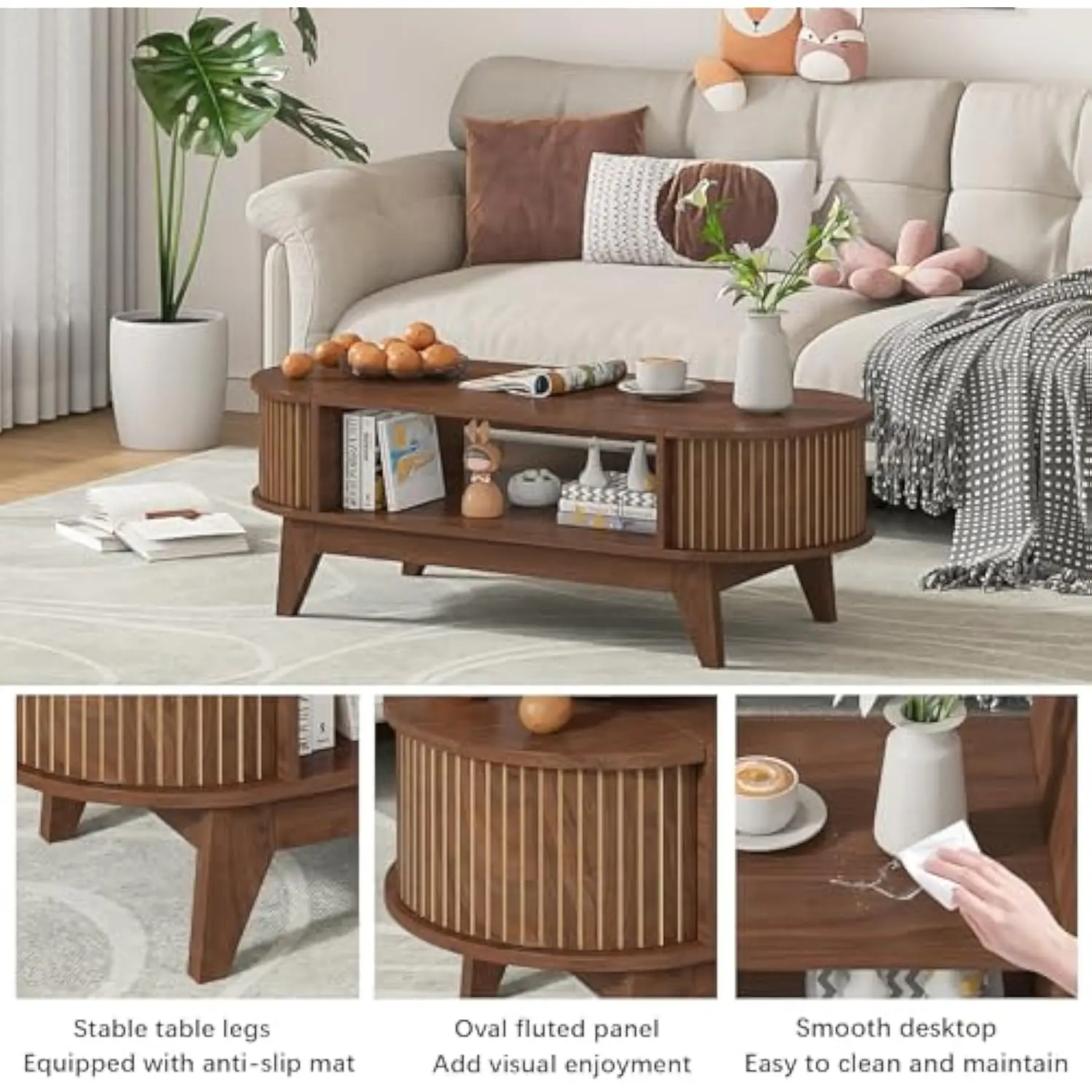
C. Protective Finishes: Shielding Your Investment
A furniture finish serves as the critical barrier between wood and the external environment. Beyond aesthetic considerations, finishes determine resistance to moisture, UV damage, staining, and general wear while highlighting the wood’s natural beauty.
Common furniture finishes offer different levels of protection:
- Polyurethane (water or oil-based): Creates a hard, durable surface highly resistant to moisture, heat, and wear; excellent for high-traffic pieces
- Lacquer: Provides moderate to high durability with exceptional clarity; commonly used on fine furniture
- Varnish: Offers excellent moisture and heat resistance; traditionally used on dining tables and outdoor furniture
- Oil finishes (tung, linseed): Penetrate wood to provide moderate protection while enhancing grain; easily repairable but require more maintenance
- Shellac: Creates a warm, traditional appearance with moderate durability; less resistant to moisture and heat
- Wax: Provides minimal protection but creates a soft luster and pleasant feel; requires regular renewal
The finish selection should match the furniture’s intended use. Tables, kitchen items, and high-touch surfaces benefit from durable polyurethane or varnish finishes. Display pieces or occasional furniture may use oils or shellac to maximize beauty with less concern for heavy protection.
One of solid wood’s greatest advantages is its ability to be refinished. When a surface eventually shows wear or damage, the finish can be removed and replaced, essentially renewing the piece. This contrasts sharply with engineered materials, where surface damage is often irreparable. Understanding walnut finish durability and care helps maintain the beauty and protection of this popular wood species.
D. Environmental Conditions: The External Influences
Environmental factors significantly impact solid wood furniture’s longevity, regardless of quality construction. Understanding and controlling these conditions helps prevent damage and extend furniture life.
Humidity represents the most critical environmental factor affecting wood furniture. Wood naturally expands and contracts as it absorbs and releases moisture from the air. Ideal relative humidity for wood furniture ranges between 30-50%. Outside this range:
- Too high humidity (above 60%): Wood absorbs excess moisture, potentially causing swelling, joint stress, and eventual warping
- Too low humidity (below 25%): Wood releases moisture, potentially causing shrinkage, cracking, and joint loosening
Temperature fluctuations compound humidity issues, as rapid changes don’t allow wood time to adjust gradually. Additionally, direct sunlight and UV exposure accelerate finish deterioration and cause uneven color changes in wood.
Practical strategies for maintaining optimal conditions include:
- Using humidifiers in winter and dehumidifiers in summer to maintain consistent humidity
- Positioning furniture away from heating/cooling vents, radiators, and fireplaces
- Using window treatments to block direct sunlight on wood surfaces
- Employing room hygrometers to monitor conditions
- Avoiding basement or attic storage where temperature and humidity fluctuate drastically
Regional climate considerations matter too. In arid regions like the Southwest, added humidity benefits wood furniture. In humid coastal areas, dehumidification helps prevent swelling issues. Many mid-century modern walnut coffee tables have survived for decades by being kept in appropriate environmental conditions that preserve their structural integrity.
E. Usage and Daily Care: How You Live with Your Furniture
Daily interactions with furniture significantly impact its lifespan. Even expertly crafted pieces from the finest materials deteriorate prematurely without proper use and care habits.
How furniture gets used affects its structural durability:
- Weight distribution: Overloading shelves or tabletops beyond their designed capacity stresses joints and causes warping
- Movement practices: Dragging furniture rather than lifting causes joint stress and floor damage
- Sitting habits: Rocking back on chair legs or sitting on furniture arms weakens structural integrity
- Surface treatment: Using furniture surfaces as impromptu cutting boards, hot plates, or work surfaces damages finishes
Simple daily habits dramatically extend furniture life:
- Using coasters under drinks to prevent water rings and heat damage
- Employing tablecloths or placemats under dinnerware to prevent scratches
- Lifting (rather than dragging) furniture when repositioning
- Avoiding placing furniture in direct sunlight or near heating sources
- Promptly addressing spills, particularly water and alcohol
- Regular dusting with appropriate materials (soft, lint-free cloths)
Understanding proper styling for black mid-century coffee tables includes not just aesthetic arrangements but also protection practices that maintain their integrity through years of use.
Solid Wood vs. The Alternatives: A Durability Showdown
A. Solid Wood vs. Engineered Wood
When comparing solid wood to engineered wood products like plywood, MDF (Medium-Density Fiberboard), and particleboard, clear durability differences emerge that affect long-term value:
| Durability Factor | Solid Wood | Engineered Wood |
|---|---|---|
| Structural Integrity | Maintains strength for decades; can bear weight without sagging | Prone to sagging under weight over time; internal bonds deteriorate |
| Moisture Resistance | Can withstand occasional exposure; may swell but regains shape when dried | Often permanently damaged by moisture; swelling and deterioration cannot be reversed |
| Repair Potential | Highly repairable; can be sanded, patched, rebuilt, and refinished | Limited repair options; damaged sections typically cannot be restored |
| Wear Resistance | Develops character with age; dents and scratches often enhance appeal | Surface damage typically exposes unattractive substrate material |
| Longevity | 50-100+ years with proper care | Typically 5-20 years depending on quality and use |
| Value Over Time | Often appreciates or maintains value | Consistently depreciates; rarely has resale value |
High-quality engineered wood products do have appropriate applications, particularly in:
– Furniture components not subject to heavy wear
– Large flat panels where solid wood might be prone to warping
– Budget-conscious furniture that will see limited use or short-term application
However, for furniture intended to last generations or withstand daily use, solid wood’s durability advantages become increasingly apparent over time. The substantial features of black mid-century coffee tables that incorporate solid wood construction demonstrate why these pieces remain functional and beautiful decades after their creation.
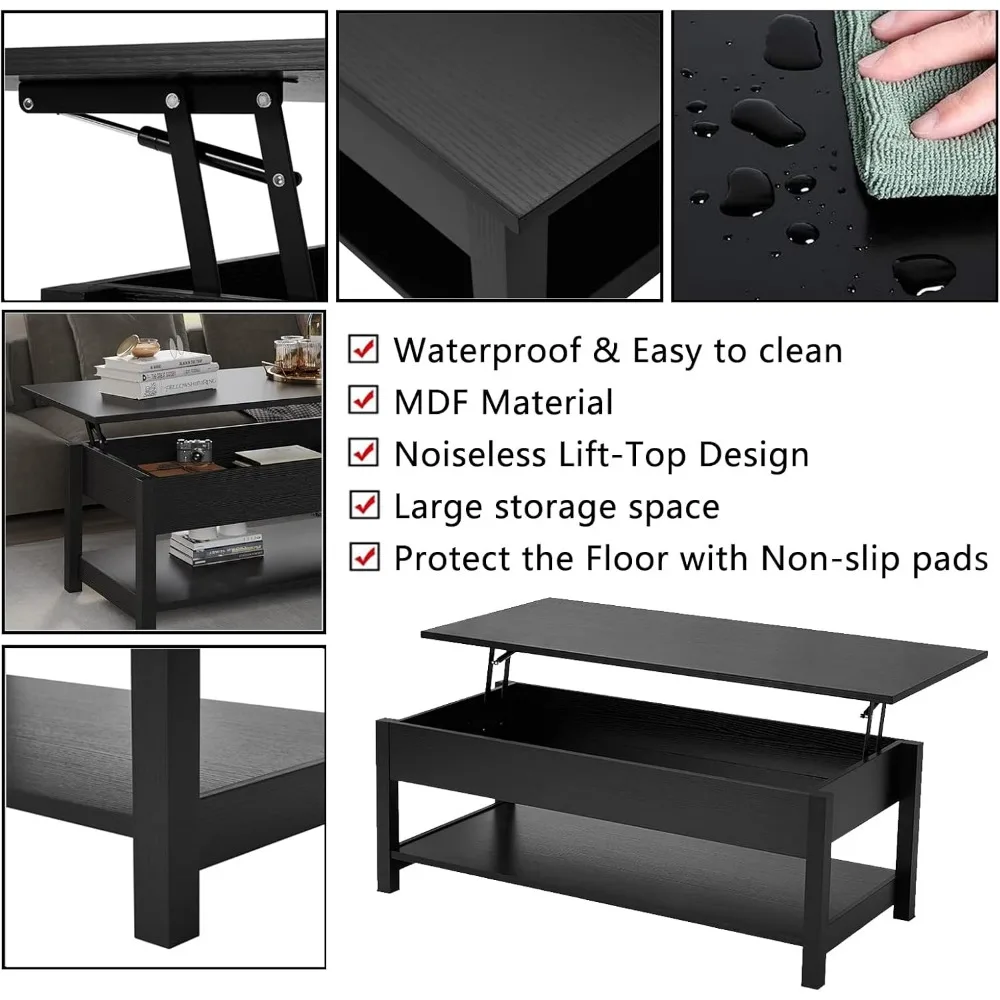
B. Solid Wood vs. Wood Veneer
Wood veneers—thin slices of wood adhered to a substrate—offer an economical way to incorporate real wood appearance into furniture. However, important durability distinctions exist between veneer and solid wood construction:
Surface durability: Veneers typically measure 1/42” to 1/16” thick, providing minimal material for sanding or repair. Solid wood offers substantially more material (often 3/4” or thicker) that can be repeatedly refinished.
Damage repair: When veneers sustain damage (chips, deep scratches, bubbling), repair options are limited and often visible. Solid wood can be sanded, filled, or even partially replaced while maintaining integrity.
Moisture resistance: Veneers are vulnerable to delamination if moisture penetrates the finish. Solid wood may experience surface damage from moisture but rarely suffers structural failure.
Aging characteristics: Veneers and solid wood age differently, with solid wood developing richer patina and character marks that enhance its appeal. Veneer aging tends to emphasize seams and substrate issues.
Refinishing potential: While solid wood can be completely refinished multiple times, veneer typically allows only light surface treatment before risking breakthrough to the substrate.
Quality veneer furniture has legitimate applications, particularly for:
– Decorative pieces with limited handling
– Creating stable surfaces with figured woods that would be unstable in solid form
– Budget-conscious options where appearance matters more than long-term durability
For pieces intended to withstand decades of use and potentially serve as heirlooms, solid wood provides substantial durability advantages. Browse our mid-century modern coffee tables to see examples of both construction methods with appropriate applications.
Extending the Lifespan: Essential Maintenance and Care
A. Regular Cleaning and Protection Practices
Proper cleaning routines significantly extend furniture life by preventing buildup that can damage finishes and attract moisture. Establishing simple maintenance habits protects your investment with minimal effort.
For routine cleaning:
– Dust frequently using soft, lint-free cloths (microfiber works well)
– Wipe with the grain rather than in circles to prevent scratching
– Avoid silicone-based dusting products that build up over time
– Use only cleaners specifically formulated for wood furniture
– Never use all-purpose cleaners containing ammonia or abrasives
When dealing with common issues:
– Blot spills immediately rather than wiping, which spreads liquid
– Use coasters under all beverages, particularly alcohol and water
– Place hot items on trivets or mats, never directly on wood surfaces
– Clean sticky spots with a barely damp cloth followed immediately by a dry cloth
– Use mild soap (like dish soap) heavily diluted with water for stubborn dirt
Preventative measures make significant difference:
– Apply felt pads under all items placed on wood surfaces
– Use tablecloths or placemats during meals
– Reposition decorative items occasionally to prevent uneven finish aging
– Cover furniture during painting, construction, or other dusty activities
Different black mid-century modern coffee table styles may require specific care approaches based on their unique finishes and construction methods.
B. Managing Environmental Factors
Controlling the environment surrounding your furniture prevents many common issues before they start. Simple adjustments to furniture placement and room conditions dramatically improve long-term durability.
For humidity management:
– Maintain indoor relative humidity between 30-50% year-round
– Use room hygrometers to monitor conditions (inexpensive and widely available)
– Add portable humidifiers in winter when heating systems dry air
– Use dehumidifiers or air conditioning during humid summer months
– Consider whole-house humidity control systems for valuable collections
For temperature and light protection:
– Position furniture away from heating vents, radiators, and fireplaces
– Avoid placing wood furniture near exterior doors with temperature fluctuations
– Use window treatments to block direct sunlight, especially harsh afternoon exposure
– Rotate accessories periodically to ensure even UV exposure on surfaces
– Consider UV-filtering window films for rooms with significant sunlight
For optimal furniture placement:
– Allow air circulation around and behind wood pieces to prevent moisture buildup
– Position furniture away from exterior walls in homes with humidity issues
– Ensure adequate distance from heating/cooling sources that create micro-climates
– Consider furniture placement when opening windows during humid weather
Mid-Century Modern Solid Wood Coffee Tables, Mid-Century Modern Teak Coffee Tables
$879.95 Select options This product has multiple variants. The options may be chosen on the product pageMid-Century Modern Danish Coffee Tables, Mid-Century Modern Oval Coffee Tables, Mid-Century Modern Solid Wood Coffee Tables
$390.05 Select options This product has multiple variants. The options may be chosen on the product pageMid-Century Modern Coffee & End Table Sets, Mid-Century Modern Coffee Table Sets, Mid-Century Modern Oval Coffee Tables
Price range: $257.48 through $331.04 Select options This product has multiple variants. The options may be chosen on the product pageMid-Century Modern Glass Top Coffee Tables, Mid-Century Modern Glass Top Side & End Tables
$460.58 Select options This product has multiple variants. The options may be chosen on the product pageMid-Century Modern Glass Top Coffee Tables, Mid-Century Modern Vintage Coffee Tables, Mid-Century Modern Vintage Side & End Tables
$725.36 Select options This product has multiple variants. The options may be chosen on the product pageMid-Century Modern Lift Top Coffee Tables, Mid-Century Modern Square Coffee Tables
$454.73 Select options This product has multiple variants. The options may be chosen on the product page
Our mid-century modern square coffee tables showcase thoughtful design that accommodates natural wood movement while maintaining structural integrity for decades.
C. Polishing, Conditioning, and Repair Basics
Regular maintenance beyond cleaning helps preserve wood’s natural beauty and protective finish. Understanding basic care procedures appropriate for your furniture’s specific finish type extends its lifespan significantly.
For polishing and conditioning:
– Determine your finish type before selecting products (test in inconspicuous area)
– Use polish formulated specifically for your finish type (oil-based for oil finishes, wax-based for traditional finishes)
– Apply sparingly every few months rather than heavily and frequently
– Focus on cleaning first, then conditioning only when wood feels dry
– Consider commercial products like Howard Feed-N-Wax or Guardsman for quality results
For minor repairs:
– Address water rings promptly with fine steel wool (#0000) and appropriate polish
– Fill small scratches in dark woods with matching color furniture markers
– Repair minor dents by placing a damp cloth over the area and applying heat with an iron
– Tighten loose screws and joinery at first signs of wobbling
– Touch up worn finish areas before bare wood becomes exposed
Signs professional help is needed:
– Deep structural damage or broken components
– Significant finish failure covering large areas
– Veneer delamination or chipping
– Failed joints that continue loosening after tightening
– Water or pest damage affecting structural integrity
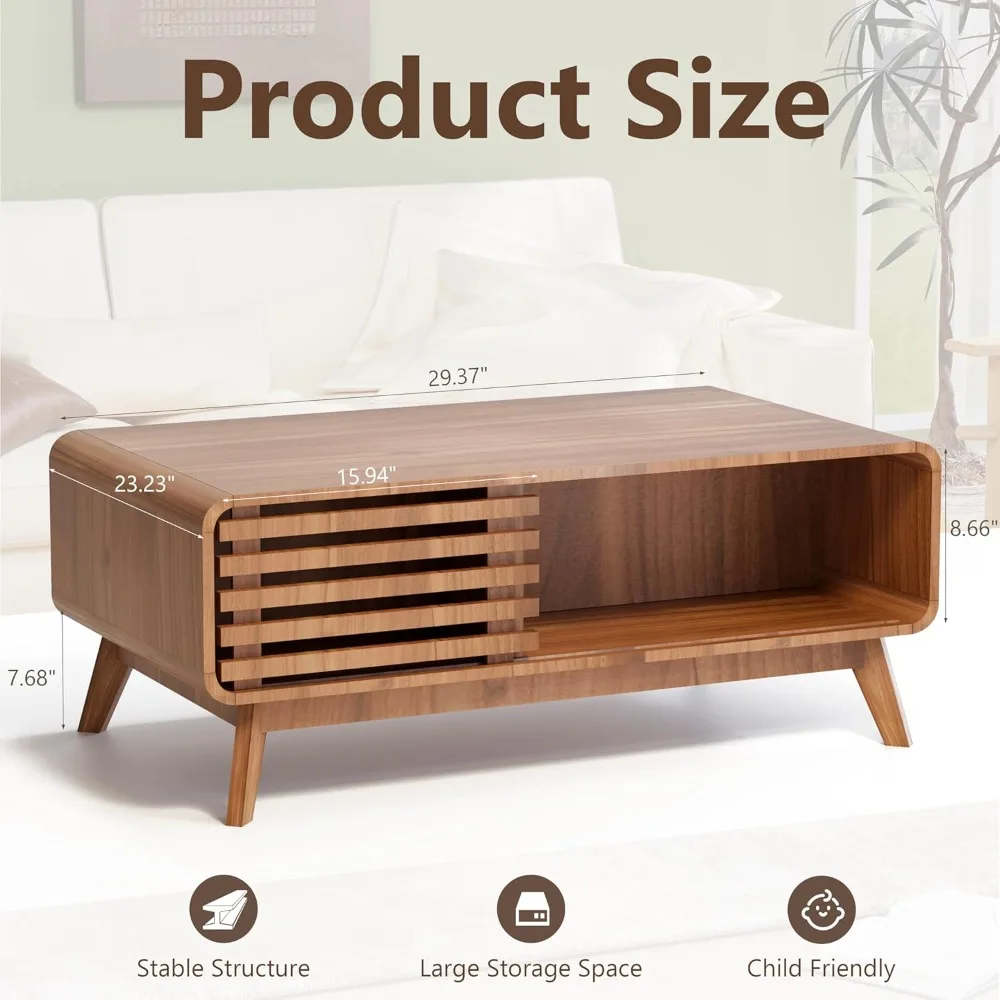
The Enduring Value: Why Solid Wood is a Worthwhile Investment
A. Long-Term Economics and Sustainability
When evaluated over decades rather than years, solid wood furniture often represents the more economical choice despite higher initial cost. This long-term value proposition becomes apparent when considering:
Replacement cycles: While quality solid wood pieces may last 50+ years, lower-quality furniture typically requires replacement every 5-10 years. Three replacements of cheaper furniture often exceed the cost of one quality piece.
Repair versus replacement: When engineered furniture sustains damage, replacement is typically the only option. Solid wood can be repaired repeatedly, extending useful life indefinitely.
Resale value: Quality solid wood furniture often retains 50-70% of its value after decades of use. Some pieces from recognized makers actually appreciate, while disposable furniture has minimal resale value.
Environmental impact: Manufacturing furniture creates substantial resource consumption and carbon footprint. A single piece lasting generations has significantly lower environmental impact than multiple replacements.
The sustainability advantages extend beyond longevity:
– Responsibly harvested wood is a renewable resource that sequesters carbon
– Wood production requires less energy than metal, plastic, or engineered materials
– End-of-life solid wood furniture biodegrades naturally or can be repurposed
– Quality pieces often receive FSC (Forest Stewardship Council) or other sustainability certifications
When considering black mid-century coffee tables decorating options, the investment value of well-made solid wood becomes apparent through its ability to maintain both function and style over decades.
B. Timeless Appeal and Versatility
Beyond physical durability, solid wood furniture offers aesthetic longevity that transcends passing trends. This timeless quality stems from several inherent characteristics:
Patina development: Unlike manufactured materials that degrade with age, solid wood develops richer color and character through oxidation and natural oils from handling. This patina creates visual depth impossible to replicate artificially.
Design adaptability: Classic solid wood pieces blend seamlessly across design styles. A quality walnut dining table works equally well with mid-century, traditional, contemporary, or eclectic décor.
Emotional resonance: Wood’s organic nature creates psychological comfort through its warmth, texture, and connection to nature. This emotional appeal transcends specific design movements.
Visual versatility: Natural wood tones complement virtually any color palette, allowing furniture to transition through multiple home designs without replacement.
Customization potential: Solid wood can be refinished to match evolving tastes, effectively creating a “new” piece without replacement.
The enduring appeal of mid-century modern Danish coffee tables demonstrates how quality solid wood furniture remains relevant and desirable despite changing design trends. While fashion-forward pieces may feel dated within years, well-designed solid wood furniture often appears increasingly at home as it ages.
Addressing Common Concerns: When to Worry About Wood Movement
Wood’s organic nature means it responds to environmental changes in ways that synthetic materials don’t. Understanding normal behavior versus concerning issues helps owners distinguish between natural characteristics and problems requiring attention.
Q: My solid wood tabletop has developed small cracks along the grain. Should I be concerned?
A: Small hairline cracks along grain lines, particularly at the ends of boards or near the pith, represent normal seasonal movement. These often appear during winter heating season and close during more humid months. They rarely affect structural integrity and generally don’t require repair unless they catch fingernails or silverware.
Q: The drawers in my solid wood dresser are harder to open during summer. Is something wrong?
A: This represents classic wood expansion during humid months. Wood absorbs atmospheric moisture, causing slight swelling that tightens tolerances between moving parts. This normal seasonal behavior typically resolves in drier conditions. Only if drawers become completely stuck should you consider dehumidifying the space or having a craftsperson ease the drawer sides slightly.
Q: My table feels slightly wobbly during certain seasons. Is this structural failure?
A: Seasonal joint movement is common as wood components expand and contract at different rates based on grain orientation. Periodic tightening of hardware during seasonal transitions maintains structural integrity. Only persistent loosening that worsens over time indicates potential joint failure requiring professional attention.
Q: The color of my solid wood furniture has changed over time. Is this damage?
A: Wood naturally changes color with UV exposure. Cherry darkens to rich auburn, walnut lightens slightly before deepening, and maple develops golden honey tones. This natural aging represents one of wood’s most appealing qualities. Only stark, uneven discoloration indicates problematic UV damage.
Understanding how styles complement mid-century modern design helps place these natural wood characteristics in appropriate context—where subtle wood movement and graceful aging enhance rather than detract from furniture’s appeal.
Conclusion: Making an Informed Decision
The exceptional durability of solid wood furniture stems from multiple interconnected factors: the inherent properties of quality wood species, superior construction techniques, protective finishes, environmental conditions, and proper care. Together, these elements create pieces capable of withstanding generations of use while growing more beautiful with time.
When evaluating solid wood furniture as an investment, consider both tangible and intangible benefits. The initial higher cost distributes across decades of service, often making it more economical than repeatedly replacing lower-quality alternatives. Beyond economics, solid wood offers environmental sustainability, repairable longevity, and aesthetic value that synthetic materials cannot match.
For those considering a purchase, prioritize:
– Selecting appropriate wood species for the furniture’s intended use
– Identifying quality construction methods, particularly joinery
– Choosing finishes that balance beauty with necessary protection
– Committing to basic maintenance and environmental control
– Viewing the purchase as a long-term relationship rather than a temporary solution
Perhaps the most compelling aspect of solid wood furniture is its ability to carry stories and history. Each scratch, patina mark, and repair tells part of your story, creating pieces with significance beyond function—furniture that becomes more meaningful with each passing year.

